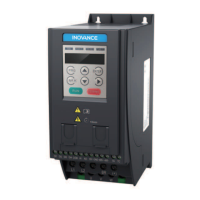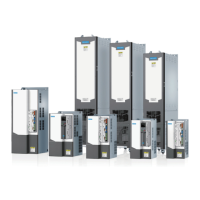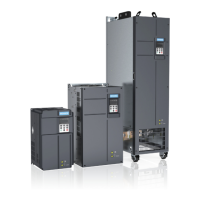Options
‑114‑
K: about 50%
Pr: Power of the braking resistor
D: Braking frequency, which is the proportion of the regenerative process to the
whole working process
The following formulas can be generated based on the preceding equations:
K x Pr = Pb x D = U x U/R x D
Pr = (U x U x D)/(R x K)
The braking resistor power Pr can be calculated accordingly.
K is the derating factor of the braking resistor. A small K value ensures that the
braking resistor does not get overheated. You can increase the value of K properly
under favorable heat dissipation conditions of the braking resistor. However, keep the
value of K no larger than 50%. Otherwise, the braking resistor will overheat, which
may cause a fire.
The braking frequency D is determined based on actual applications. "
Table 5–37
"
on
page 114
lists the typical values in common applications.
Table 5–37 Typical braking frequencies in different applications
Common
Application
Elevator Winding and
Unwinding
Centrifuge Occasional
Braking Load
Regular
Applications
Braking
Frequency
20% to
30%
20% to 30% 50% to 60% 5% 10%
Dimensions of braking units
The following figures show dimensions of two braking unit series.
Figure 5‑33 Dimensions of MDBUN series braking units (MDBUN‑45‑2T to MDBUN‑90‑2T;
MDBUN‑45‑T to MDBUN‑90‑T; MDBUN‑45‑5T to MDBUN‑90‑5T) (mm)

